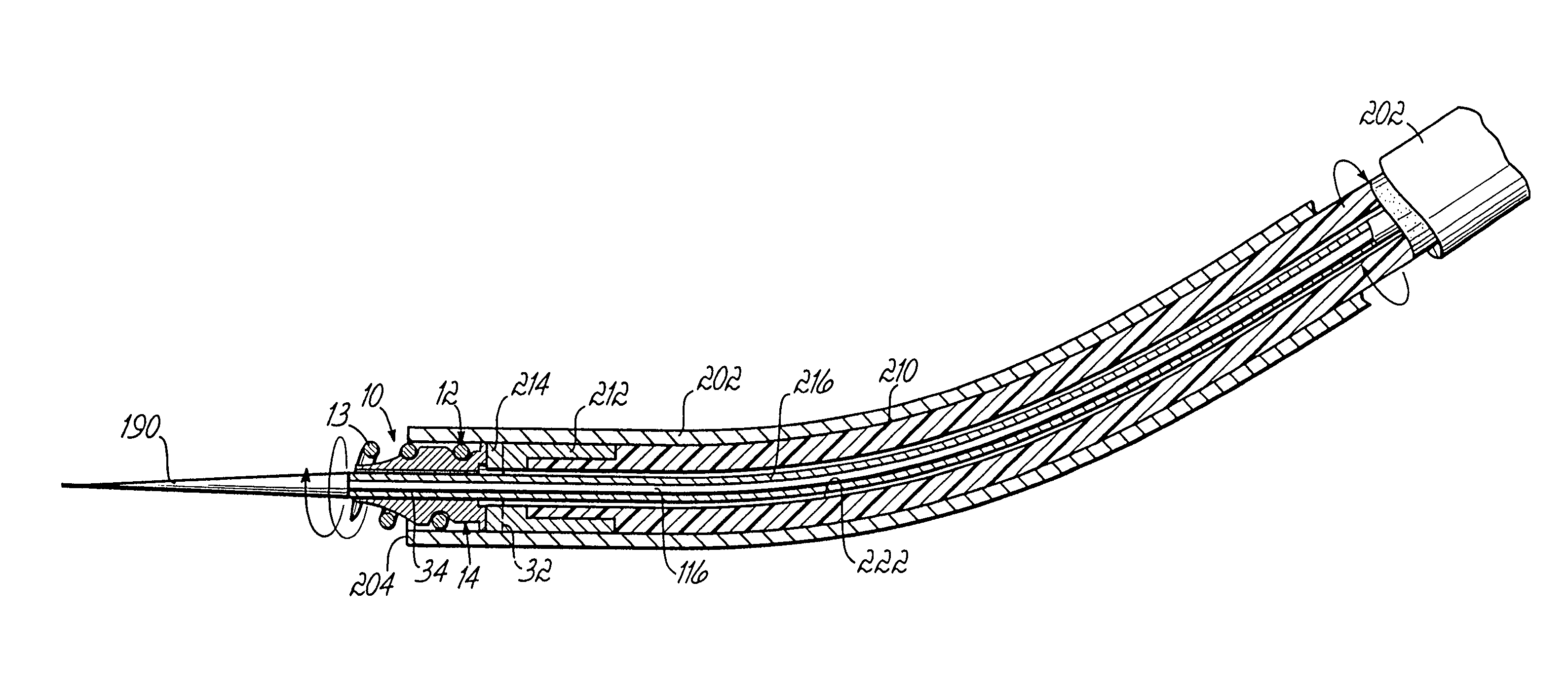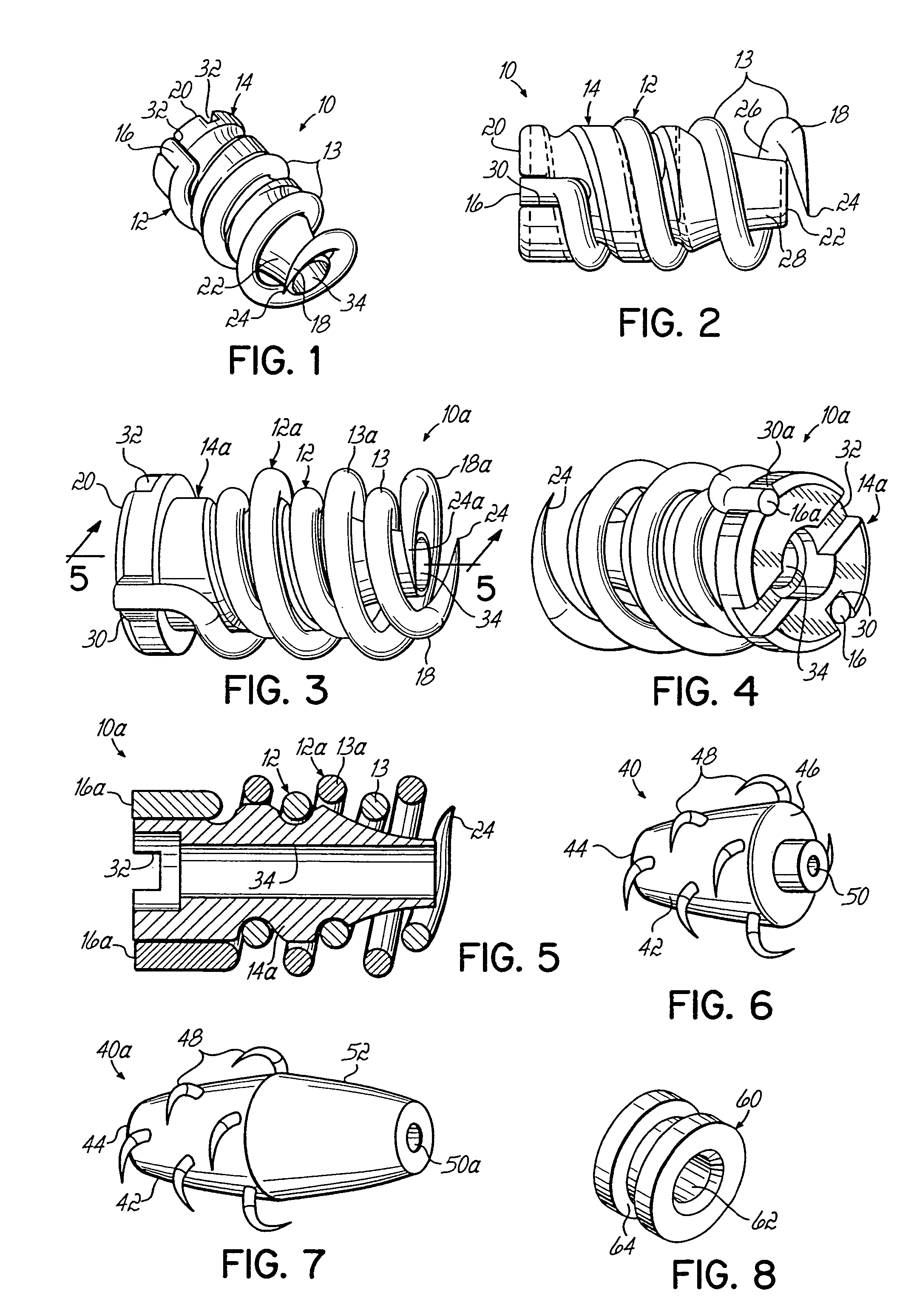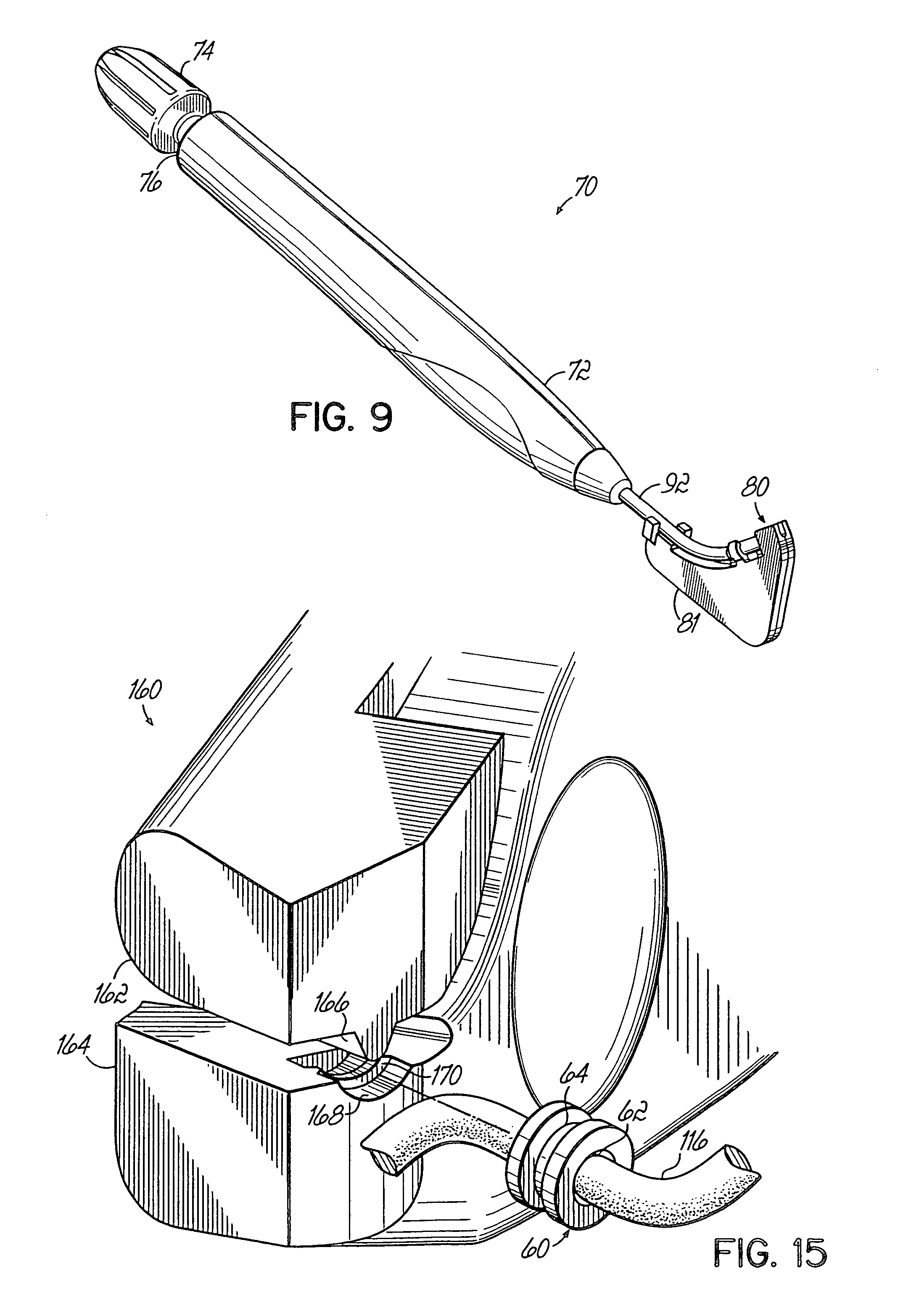Apparatus and methods for tendon or ligament repair
a technology for repairing tendons and ligaments, applied in the direction of ligaments, prostheses, surgical staples, etc., can solve the problems of difficult mastery of techniques, difficult to perform, and difficult to repair foreign materials, so as to prevent damage to the elongated tensile member
- Summary
- Abstract
- Description
- Claims
- Application Information
AI Technical Summary
Benefits of technology
Problems solved by technology
Method used
Image
Examples
Embodiment Construction
[0096]Referring now to FIGS. 1 and 2, an exemplary embodiment of the invention is described in connection with tendon-to-tendon or ligament-to-ligament repair. In this embodiment, a soft tissue anchor assembly 10 comprises a helical anchor 12 and a core portion or tendon fiber retaining member 14. Helical anchor 12 has proximal and distal ends 16, 18 and retaining member 14 likewise has proximal and distal ends 20, 22. The distal end 18 of helical anchor 12 extends distally beyond the distal end 22 of retaining member 14 and is sharpened to a point 24 to aid in insertion. In addition, retaining member 14 is tapered at its distal end 22 creating a space 26 between coils 13 of the helical anchor 12 and the outside surface 28 of the retaining member 14 for receiving and retaining tendon or ligament fibers therein, at least at a location near distal ends 18, 22 as will be discussed more fully below.
[0097]The proximal end 16 of helical anchor 12 is fixed to retaining member 14 at its pro...
PUM
 Login to View More
Login to View More Abstract
Description
Claims
Application Information
 Login to View More
Login to View More - R&D
- Intellectual Property
- Life Sciences
- Materials
- Tech Scout
- Unparalleled Data Quality
- Higher Quality Content
- 60% Fewer Hallucinations
Browse by: Latest US Patents, China's latest patents, Technical Efficacy Thesaurus, Application Domain, Technology Topic, Popular Technical Reports.
© 2025 PatSnap. All rights reserved.Legal|Privacy policy|Modern Slavery Act Transparency Statement|Sitemap|About US| Contact US: help@patsnap.com



